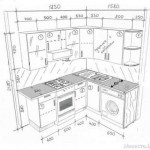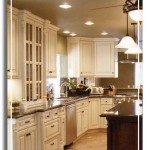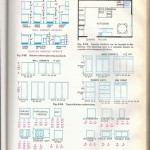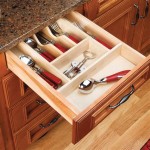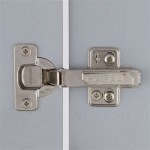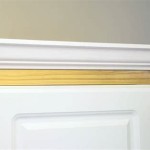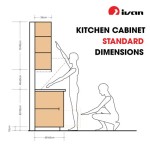Here is an article about Kitchen Cabinet Makers formatted as you requested:
Understanding the Role of a Kitchen Cabinet Maker
The kitchen is often considered the heart of a home, and its functionality and aesthetic appeal are significantly influenced by the quality and design of its cabinetry. Kitchen cabinet makers are skilled professionals who specialize in the design, construction, and installation of these essential elements. Their expertise encompasses a wide range of styles, materials, and techniques, allowing them to create customized solutions that cater to individual needs and preferences.
The scope of work for a kitchen cabinet maker goes beyond simply assembling pre-fabricated units. It involves a comprehensive process that includes initial consultations, precise measurements, design conceptualization, material selection, construction or modification of cabinets, finishing, and professional installation. The ultimate goal is to deliver a kitchen that is both functional and visually appealing, maximizing storage space while complementing the overall design of the home.
The role of a cabinet maker is often crucial in kitchen remodeling projects and new home construction. They collaborate closely with homeowners, interior designers, and contractors to ensure that the cabinetry aligns with the overall design vision and satisfies the practical requirements of the users. The ability to interpret architectural drawings, understand building codes, and effectively communicate with other tradespeople is also important for a successful project outcome.
Modern kitchen cabinet making often involves a blend of traditional craftsmanship and contemporary technology. While hand tools and time-honored techniques remain relevant, cabinet makers also utilize computer-aided design (CAD) software, CNC (computer numerical control) machines, and other advanced tools to enhance precision, efficiency, and design flexibility.
Key Areas of Expertise for Kitchen Cabinet Makers
Kitchen cabinet makers possess a diverse skill set that encompasses design, construction, and installation. Their expertise can be categorized into several key areas:
Design and Planning: Before any construction begins, a cabinet maker works with the client to develop a comprehensive design plan. This involves understanding the client's needs, preferences, and budget constraints. The design process includes taking precise measurements of the kitchen space, creating detailed drawings and visualizations, and selecting appropriate materials and finishes. A skilled cabinet maker can offer valuable insights into space optimization, functionality, and aesthetic considerations, helping clients make informed decisions about their kitchen layout and style. They are also adept at incorporating specific design elements such as islands, peninsulas, custom storage solutions, and specialized hardware.
Material Selection: The choice of materials significantly impacts the durability, appearance, and cost of kitchen cabinets. Cabinet makers are knowledgeable about a wide range of materials, including solid wood (such as oak, maple, cherry, and walnut), wood veneers, plywood, particleboard, MDF (medium-density fiberboard), and laminate. Each material has its own advantages and disadvantages in terms of strength, moisture resistance, cost, and aesthetic appeal. Cabinet makers can guide clients in selecting the most suitable materials for their specific needs and budget, considering factors such as humidity levels, usage patterns, and desired style.
Construction and Fabrication: The construction phase involves cutting, shaping, assembling, and finishing the cabinet components. Cabinet makers use a variety of tools and techniques to create precise and durable cabinets. This may involve traditional woodworking methods, such as joinery and hand-fitting, as well as the use of power tools and machinery. A skilled cabinet maker pays close attention to detail, ensuring that all components are properly aligned, securely fastened, and smoothly finished. They are also proficient in creating custom cabinet features, such as drawers, shelves, doors, and specialized storage systems.
Installation: Proper installation is crucial for ensuring the long-term functionality and appearance of kitchen cabinets. Cabinet makers are trained to install cabinets securely and levelly, taking into account the existing structure of the kitchen and any potential obstacles. This involves accurately aligning the cabinets, fastening them to the walls, and connecting them to plumbing and electrical systems, if necessary. They also ensure that doors and drawers operate smoothly and that all hardware is properly installed. Attention to detail during installation is essential for preventing problems such as sagging cabinets, uneven surfaces, and malfunctioning doors.
Factors Influencing the Cost of Kitchen Cabinetry
The cost of kitchen cabinetry can vary significantly depending on several factors. Understanding these factors can help homeowners make informed decisions and budget effectively for their kitchen remodeling or new construction project.
Materials: The type of materials used in the construction of the cabinets is a major determinant of cost. Solid wood cabinets are generally more expensive than those made of plywood, particleboard, or MDF. Exotic wood species, such as mahogany or ebony, will further increase the cost. Similarly, the choice of finish, such as paint, stain, or laminate, can also affect the overall price.
Design Complexity: The complexity of the design can also impact the cost. Custom cabinets with intricate details, such as curved doors, decorative moldings, or specialized storage solutions, will typically be more expensive than simpler, more standardized designs. The more time and effort required to design and fabricate the cabinets, the higher the cost will be.
Size and Scope: The size of the kitchen and the number of cabinets required will directly influence the overall cost. A larger kitchen with more cabinets will naturally cost more than a smaller kitchen with fewer cabinets. Similarly, the scope of the project, such as whether it involves a complete kitchen remodel or simply replacing existing cabinets, will also affect the price.
Customization: Custom-built cabinets, tailored to specific dimensions and design preferences, are generally more expensive than semi-custom or stock cabinets. Customization allows for greater flexibility in terms of design, materials, and functionality, but it also requires more time and expertise. Stock cabinets, on the other hand, are pre-fabricated in standard sizes and designs, making them a more affordable option.
Labor Costs: The labor costs associated with designing, constructing, and installing the cabinets can also vary depending on the location, the experience of the cabinet maker, and the complexity of the project. Highly skilled and experienced cabinet makers may charge higher rates, but their expertise can ensure a higher quality product and a more seamless installation process.
Finding and Selecting a Kitchen Cabinet Maker
Choosing the right kitchen cabinet maker is crucial for ensuring a successful and satisfying project outcome. Here are some steps to take when searching for and selecting a cabinet maker:
Research and Referrals: Start by researching local cabinet makers online and asking for referrals from friends, family, or neighbors. Look for cabinet makers with a strong reputation, positive reviews, and a portfolio of successful projects. Online platforms such as Yelp, Houzz, and Angie's List can provide valuable insights into the experiences of other customers.
Check Credentials and Insurance: Verify that the cabinet maker is licensed and insured. Licensing ensures that the cabinet maker meets certain professional standards and has the necessary qualifications to perform the work. Insurance protects you from liability in case of accidents or damages that may occur during the project.
Portfolio Review: Request to see a portfolio of the cabinet maker's previous work. This will give you a better understanding of their design style, craftsmanship, and attention to detail. Pay attention to the quality of the materials, the precision of the joinery, and the overall finish of the cabinets.
Obtain Multiple Quotes: Obtain quotes from several different cabinet makers before making a decision. Be sure to provide each cabinet maker with the same information about your project, including the desired style, materials, and scope of work. Compare the quotes carefully, taking into account not only the price but also the quality of the materials, the level of customization offered, and the reputation of the cabinet maker.
Detailed Contract: Ensure that you have a detailed written contract with the cabinet maker before starting the project. The contract should clearly outline the scope of work, the materials to be used, the timeline for completion, and the payment terms. It should also include provisions for resolving any disputes that may arise during the project.
By carefully researching, comparing quotes, and reviewing the portfolios of potential cabinet makers, homeowners can increase the likelihood of finding a skilled and reliable professional who can create beautiful and functional kitchen cabinetry that meets their specific needs and preferences. This comprehensive approach ensures a positive experience and a kitchen that enhances the value and enjoyment of the home.

Cabinet Makers Custom Cabinets Millwork Nyc

The Importance Of Working With A Custom Cabinet Maker

Custom Kitchen Cabinet Maker Why Hire A Built Cabinetry

How To Find The Best Cabinet Maker For Your Kitchen Renovation

The Cabinet Maker Craft A Blend Of Tradition And Innovation

Remodeling Kitchen Cabinets Cupboards Buffalo

Top Custom Kitchen Cabinet Makers In Point Pleasant Nj And Semi Cabinets Remodeling Hawthorne

Custom Kitchen Cabinet Maker Why Hire A Built Cabinetry

Cabinet Maker Tip How To Make Cabinets Fit With Your Kitchen Design Handhills

Custom Kitchen Cabinet Maker Why Hire A Built Cabinetry
Related Posts

